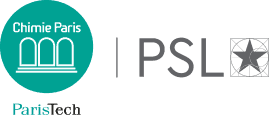
If you want to attend in person, please fill the following registration form:
A Sanitary Pass will be requested to enter the Amphitheater Jaurès
The seminar will be also accessible online at : https://us02web.zoom.us/j/81520058748?pwd=VXVkalBFR0Z3Rm5CeU54NnEwYzZlQT09
Thursday February 10th at 11 am
ENS, Salle Jaurès, 29, Rue d’Ulm, 75005 Paris
Adventures in Metalloprotein Design:
Enhancing Cu Based Enzymatic Catalysis
Pr. Vincent L. Pecoraro
University of Michigan, Ann Arbor, USA
Vincent L. Pecoraro is the John T. Groves Collegiate Professor of Chemistry at the University of Michigan. He is an expert in bioinorganic and supramolecular chemistries, having made substantial contributions to the understanding of photosynthetic water oxidation and vanadium biochemistry. In recent years he has been a leader in the field of metallaproptein desing and development of metallacrowns as biomolecular imaging agents. He served as an Associate Editor for Inorganic Chemistry for over 20 year and is a fellow of both the ACS and AAAS.
Solid Metalloproteins are critical cellular workhorses, catalyzing difficult but essential transformations that are required for functions as diverse as energy generation, metabolism, or signaling. One of the greatest unanswered questions of metalloprotein chemistry is how protein structure influences the active site to afford a desired activity. The interplay between protein structure and catalytic activity of these enzymes forms the foundation of our work. The protein may influence both the first coordination sphere (ligand type, number, and relative geometry) as well as the outer coordination environment. While native metalloenzyme studies provide valuable insights, interpretations of these systems are often inadequate because of the intricacy of the scaffold or the presence of multiple metal centers. Similarly, small molecules can afford insight on reactions but are often limited by the solvent or the synthetic complexity required to append functional groups. For this reason, we utilize an intermediate approach, de novo designed -helical proteins, which are easily synthesized, water soluble and recapitulate native metalloprotein active sites well. These designed systems provide native-like folds that can be manipulated simply in order to limit the variables that are probed during our studies. With well-defined scaffolds, one can employ both canonical and non-canonical sequences as well as non-coded amino acids to expand the chemical landscape that may be explored beyond that which is available in native systems. In this presentation, studies focused on enhancing copper catalyzed nitrite reductase and superoxide dismutase activities will be discussed. We will show how systematic modifications to first coordination sphere ligands, the immediate outer sphere environment as well as the helical pitch can lead to significant variations in observed activity.
- This évènement has passed.
